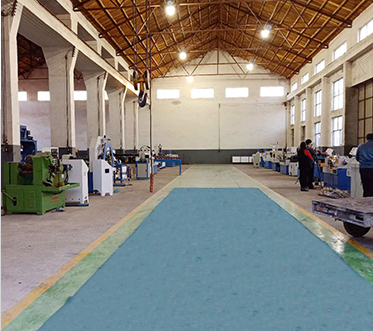
-
 Afrikaans
Afrikaans -
 Albanian
Albanian -
 Amharic
Amharic -
 Arabic
Arabic -
 Armenian
Armenian -
 Azerbaijani
Azerbaijani -
 Basque
Basque -
 Belarusian
Belarusian -
 Bengali
Bengali -
 Bosnian
Bosnian -
 Bulgarian
Bulgarian -
 Catalan
Catalan -
 Cebuano
Cebuano -
 Corsican
Corsican -
 Croatian
Croatian -
 Czech
Czech -
 Danish
Danish -
 Dutch
Dutch -
 English
English -
 Esperanto
Esperanto -
 Estonian
Estonian -
 Finnish
Finnish -
 French
French -
 Frisian
Frisian -
 Galician
Galician -
 Georgian
Georgian -
 German
German -
 Greek
Greek -
 Gujarati
Gujarati -
 Haitian Creole
Haitian Creole -
 hausa
hausa -
 hawaiian
hawaiian -
 Hebrew
Hebrew -
 Hindi
Hindi -
 Miao
Miao -
 Hungarian
Hungarian -
 Icelandic
Icelandic -
 igbo
igbo -
 Indonesian
Indonesian -
 irish
irish -
 Italian
Italian -
 Japanese
Japanese -
 Javanese
Javanese -
 Kannada
Kannada -
 kazakh
kazakh -
 Khmer
Khmer -
 Rwandese
Rwandese -
 Korean
Korean -
 Kurdish
Kurdish -
 Kyrgyz
Kyrgyz -
 Lao
Lao -
 Latin
Latin -
 Latvian
Latvian -
 Lithuanian
Lithuanian -
 Luxembourgish
Luxembourgish -
 Macedonian
Macedonian -
 Malgashi
Malgashi -
 Malay
Malay -
 Malayalam
Malayalam -
 Maltese
Maltese -
 Maori
Maori -
 Marathi
Marathi -
 Mongolian
Mongolian -
 Myanmar
Myanmar -
 Nepali
Nepali -
 Norwegian
Norwegian -
 Norwegian
Norwegian -
 Occitan
Occitan -
 Pashto
Pashto -
 Persian
Persian -
 Polish
Polish -
 Portuguese
Portuguese -
 Punjabi
Punjabi -
 Romanian
Romanian -
 Russian
Russian -
 Samoan
Samoan -
 Scottish Gaelic
Scottish Gaelic -
 Serbian
Serbian -
 Sesotho
Sesotho -
 Shona
Shona -
 Sindhi
Sindhi -
 Sinhala
Sinhala -
 Slovak
Slovak -
 Slovenian
Slovenian -
 Somali
Somali -
 Spanish
Spanish -
 Sundanese
Sundanese -
 Swahili
Swahili -
 Swedish
Swedish -
 Tagalog
Tagalog -
 Tajik
Tajik -
 Tamil
Tamil -
 Tatar
Tatar -
 Telugu
Telugu -
 Thai
Thai -
 Turkish
Turkish -
 Turkmen
Turkmen -
 Ukrainian
Ukrainian -
 Urdu
Urdu -
 Uighur
Uighur -
 Uzbek
Uzbek -
 Vietnamese
Vietnamese -
 Welsh
Welsh -
 Bantu
Bantu -
 Yiddish
Yiddish -
 Yoruba
Yoruba -
 Zulu
Zulu
High-Precision Rod Thread Rolling Machines for Efficient Manufacturing
Exploring the World of Rod Thread Rolling Machines
In the realm of manufacturing, precision and efficiency are paramount. One of the key technologies that uphold these principles is the rod thread rolling machine. These machines have revolutionized the way threads are produced on various types of rods and bars, catering to diverse industries including automotive, aerospace, and construction.
What is Rod Thread Rolling?
Rod thread rolling is a cold-forming process where metal rods are transformed into threaded components without removing material, thereby optimizing tool life and preventing waste. The process enhances the metal’s mechanical properties, offering a stronger, more durable product. Unlike traditional methods like cutting or machining, thread rolling compresses the material, allowing for tight tolerances and enhanced surface finish.
How Do Rod Thread Rolling Machines Work?
Rod thread rolling machines typically consist of three main components the rolling wheels, the feeding system, and the control panel. The process begins with the rod being fed into the machine, where it is positioned between two rotating wheels. As the wheels turn, they engage with the rod, rolling the material to form threads. The precision of this operation depends greatly on the machine's design and the settings applied by the operator.
These machines can make various types of threads, including external, internal, and special profiles, accommodating different diameters and thread pitches. Advanced models even feature programmable settings that allow for quick changes in production, enabling flexibility to meet the demands of just-in-time manufacturing environments.
Benefits of Using Rod Thread Rolling Machines
The advantages of utilizing rod thread rolling machines are numerous
rod thread rolling machine products

1. Improved Strength The cold working process not only forms threads but also increases the strength of the material due to work hardening.
2. Cost Efficiency Since there is no material wastage and lower energy consumption, manufacturers can significantly reduce operational costs.
3. High Production Rates Thread rolling machines operate at high speeds, allowing for a greater output within a shorter time frame.
4. Precision and Consistency These machines deliver tight tolerances and uniformity in thread dimensions, which is critical for components that need to fit together perfectly.
5. Reduced Need for Secondary Operations In many cases, the threads produced by rolling processes do not require additional machining or finishing, saving time and resources.
Applications Across Industries
Rod thread rolling machines find applications in a myriad of sectors. In the automotive industry, they produce components like bolts and fasteners that are crucial for vehicle assembly. The aerospace sector also benefits from these machines, ensuring that parts are lightweight yet exceptionally strong. Moreover, construction materials such as rebar and anchoring systems utilize rolled threads for enhanced safety and reliability.
Conclusion
As industries continue to evolve, the importance of precision engineering cannot be overstated. Rod thread rolling machines epitomize the convergence of efficiency, strength, and scalability in manufacturing. With ongoing advancements in technology, these machines will undoubtedly play an increasingly vital role in shaping the future of manufacturing processes, making them an indispensable part of the production landscape.
